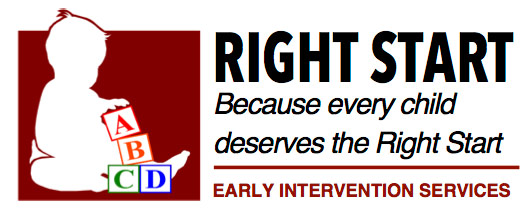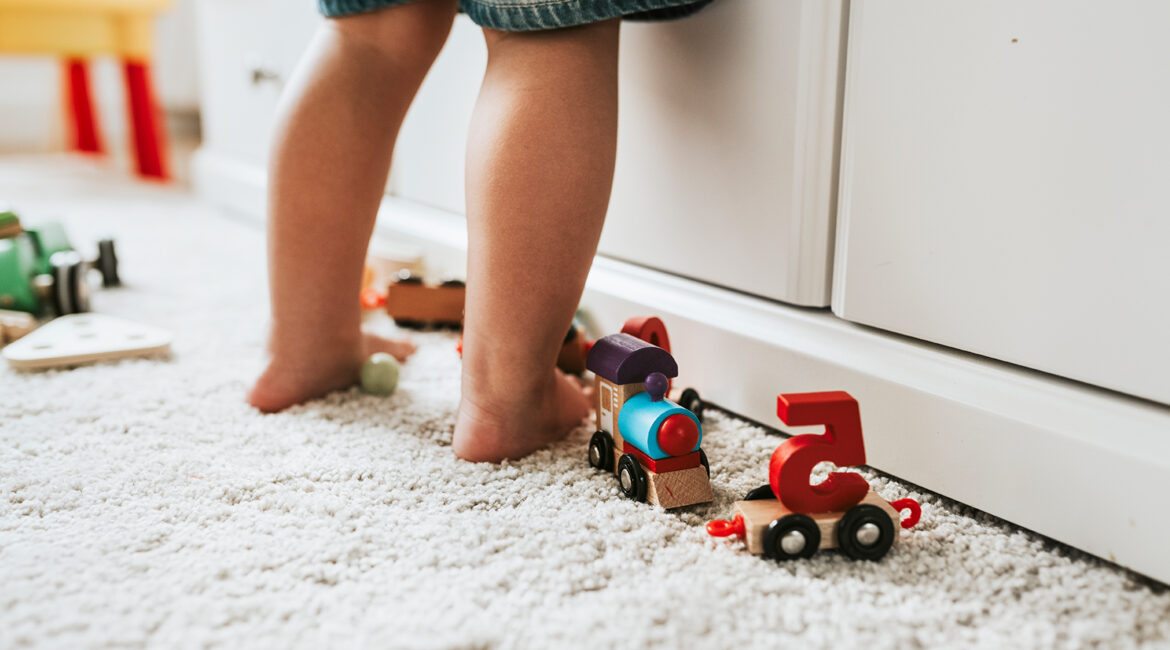There is so much strengthening and aligning to be done with little feet over the first several years of life. Barefoot play enables optimal activation of all the little muscles, ligaments and nerves in a child’s feet.
There are so many tiny structures in a child’s foot and the more stimulation the feet, ankles, knees and legs receive in the early months and years of walking the more these areas strengthen and work at their best.
Arches, bone and muscle strength, ligament flexibility and stability all increase as a result of the use of feet without shoes or ridge supports on. This helps support your child’s feet and avoids flat feet from developing.
At Right Start Inc, we believe that the comfort of our own homes is the perfect place to maximize barefoot time. Carpet, tiles, floorboards, climbing furniture are great indoor surfaces to explore.
Outside is even better to go barefoot. Grass, gravel, decking, sandpit, cement, dirt – so many options of barefoot play and brain stimulation!
Children’s little brains develop based on input – and going barefoot ramps up the quality and quantity of input to all areas of the brain, driving Optimal Development.
Being able to properly feel our environment through our feet helps develop appropriate spatial awareness and therefore safe body control/movement, optimal balance, postural stability and coordination.
The greater amount of time spent barefoot combined with a wide variety of surfaces enhances the input to the brain supporting a child’s development throughout childhood.
At Right Start, we know there are parents who insist their children keep their shoes on during play. Maybe they believe foot injuries are likely, or they fear dirt or germs, but here are some benefits of being barefoot:
When a child walks with bare feet, not only does it improve walking, balancing and movement, it can also provide a wide range of health benefits.
- Stimulate Pressure Points and The Nervous System – Feet are hard-wired with multiple pressure points and nerve endings to convey messages to other parts of the bodies. Going barefoot stimulates them and the entire nervous system.
- Strengthen Joints and Muscles – Walking barefoot strengthens the muscles in children’s feet and ankles, improving balance and posture. It engages the feet ‘ arches, strengthening them, and improves the alignment of muscles throughout the legs.
- Strengthens Feet and Body – When barefoot, we grip the ground more easily using the muscles of our feet and toes, strengthening them and reducing the risk of trips and falls. Walking barefoot allows us to maintain the full function of our feet.
- Foster a Connection With Nature – Children become more aware of their surroundings – how the ground feels, is there a sharp rock ahead, etc. – their senses are heightened. They can feel the papery leaves crunching underfoot. The softness of the grass. The sharpness of prickles. When all five senses are fully engaged, they completely connect with nature and children develop an appreciation of the natural world they are walking through.
Allowing children to directly feel what they are walking on allows stronger messages to be sent to the brain about exactly how best to walk on certain types of surfaces. It is argued that shoes cloud these messages, and cause more accidents.
What if my child has had little to no barefoot play?
If you feel your child has little barefoot play, and it is affecting their development, or perhaps you have noticed they have flat feet:
There are lots of little ways to help improve foot strength and proprioception at any time.
Some easy ways to do this with your child are:
- Rolling the sole of the foot over a tennis ball, rolling pin, or spiky ball.
- Picking up small objects with toes (in the bath is great to do this too!). Think LEGO, marbles, Ooshies (Yes, there can be a useful purpose for these things).
- Scrunching fabric (t-shirt, silk pillowcase, calico/hessian fabric) along under the foot like a ‘hungry caterpillar’.
- Balance and wobble boards are brilliant for building strong feet, ankle and low limb brain stimulation and optimal body control.
Strategies To Get Started On Being Barefoot
- Be mindful when shoes are necessary and ensure you know when children need to have their shoes back on.
- Explain to children when and why shoes are required, such as when it’s time to go home, so they understand when it’s okay to be barefoot.
- Encourage children to take their shoes off when they arrive and throughout the day to walk on a variety of different surfaces regularly such as dirt, sand, gravel, stones, carpet, tiles, and floorboards.
- Set up sensory activities for the feet such as walking in slime or set up different trays with different materials like sand and water to stand in.
At Right Start Inc, we believe that being barefoot enables children to relax, and reawaken their senses. It also helps children understand spatial awareness, it gives them a sense of different textures under their feet, and it helps their feet develop naturally.
Research also tells us that children thrive in the outdoors and natural environments, so not having shoes as a barrier between feet and the natural world works to increase health promoting benefits.
Spending time outside and in your child’s natural environment is encouraged for your children’s overall social and emotional wellbeing.

